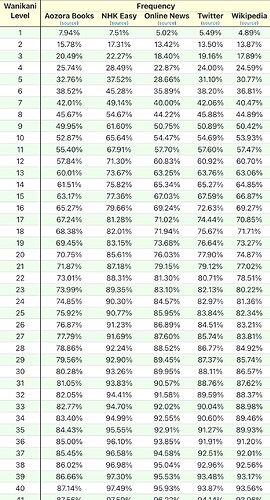Disagree, I’m only level 14 on WK and have about 95% of N5 and N4 kanji covered (+ almost half of N3 and some more from higher levels), and about 60% of vocab for N5 and N4 (after synching here on bunpro).
As someone who completely gave up on Japanese before after several years because I couldn’t get beyond the first ~100 kanji, I don’t understand most of the complaints about WK. Maybe that’s because I use several other resources and it’s really just about the kanji for me. It’s not slow at all imo, I’m further along in my kanji knowledge than the rest of my Japanese class, and I’m going super slow on WK already, and most of the mnemonics really work for me - I’m glad I got lifetime btw, takes the pressure off, and probably helps with the feeling of WK not being slow/trying to slow you down? And I guess I’m also a bit unusual in that I don’t mind going through the basics again and again, I’ve started at 0 on bunpro and am doing it again on marumori (both for grammar and for kanji/vocab). It’s nice to reinforce that knowledge, and maybe discover some gaps here and there. So going through some of what I already knew on WK didn’t bother me at all.
More on topic: Bunpro adding vocab decks was super great and it’s helping me a lot, especially the decks for more books than they have grammar paths for (we use Marugoto in class, so now I can actually add some of it on here as we’re going through the material in class - unfortunately the decks are still a bit incomplete concerning vocab, and we’re almost done with the last book bunpro has)






 .
.